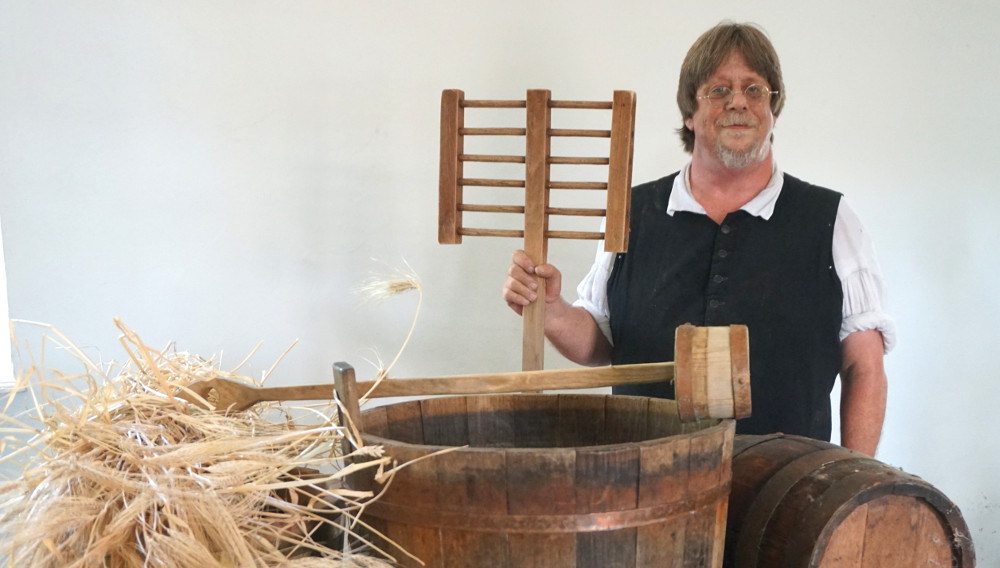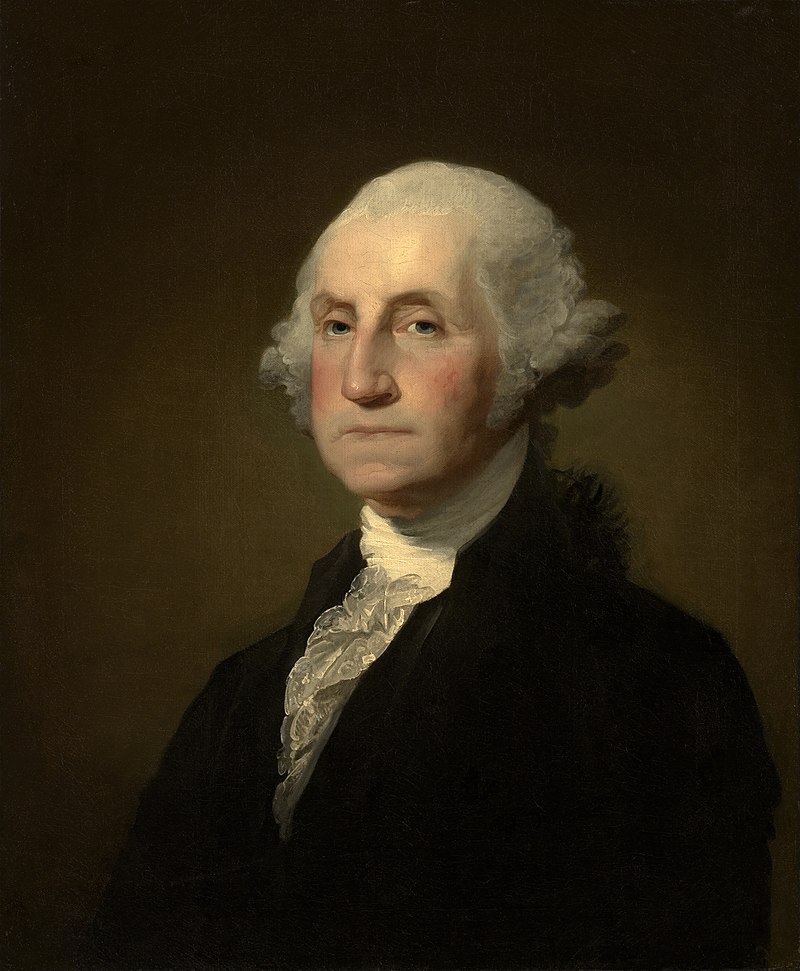Historical beer recipes from the New World
The humble beginning of beer production in the New World goes back to the British colonial period in North America. A number of recipes have survived, especially from the 18th century. Their authors carefully wrote them down in the meticulous English of the time, which seems antiquated to us today.
Joseph Clarke, Treasurer General of the Rhode Island Colony
Directions for Brewing Malt Liquors around 1775 from his letter estate.
A recipe for "small beer" has been handed down from the first president of the united states, George Washington (Image: Wikimedia Commons, public domain)You are first to have ready the following Implements, a mash Vat, to put your malt in; a Vessel under this to receive the Wort in; a Copper to boil in; a Rudder to stir your malt with, and Vessels to cool your Liquor in; First then fill your Copper with water, take then 6 Bushels of Malt and put into your mash Vat, leaving about a Peck to sprinkle over the Liquor when in, Let your water simper, and be in the next degree of boiling but not boil; lay it on upon the Malt well ground, and when you have laid on such a quantity as you can draw off a Barrel of Wort, stir the malt well together with your Rudder; and then sprinkle the remaining Peck of Malt over all covering it up with Cloths to keep the heat in; for three hours; only when it have stood an hour and half draw off a pail full or two; and lay it on again to clear your tap hole.
This done the next Business is to boil a Copper of Water, to scald your other Vessels with; always taking care to have a Copper of Liquor hot to lay on, upon the malt when you draw off the first Wort, and this will be for small Beer. The three hours now expired; let go (as the Term is) which is let the first wort run off, putting into the Vessel which receives it a pound of Hops; when all drawn off lay on the hot Liquor for your small Beer, clean out your Copper and put the wort, Hops and all into the Copper and boil it for two hours; strain it then off thro: a Sieve into your Vessels to cool it; and put your small Beer into Copper and the same hops that come out of the first Beer and boil it an hour.
When both are almost cool add Yeast to them; to set it to work, breaking the head in every time it rises; till it works itself clear and tun in; Bung it up with Clay and keep it in your Cellar, in three months you may bottle the strong Beer, the other in a weeks time will be fit to drink."
George Washington, future first President of the United States
A recipe for a "small beer" for 30 gallons or about 150 litres, from his notebook of 1754.
Take a large siffer [sieve] full of bran [,] hops to your taste - boil these 3 hours. Then strain our 30 gall[o]n into a cooler put in 3 gall[o]n molasses while the beer is scalding hot or rather draw the molasses into the cooler. Strain the beer on it while boiling hot, let this stand till it is little more than blood warm.
Then put in a quart of ye[a]st if the weather is very cold cover it over with a blank[et] let it work in the cask - Leave the bung open till it is almost done working - Bottle it that day [a] week [after] it was brewed.
Benjamin Franklin, one of the "founding fathers" of the United States
A way to make beer with essence of spruce, originally written in French between 1779 and 1785 as Manière de faire de la bière avec de l'essence de spruce. At the time, Franklin was the American envoy to France.
For a Cask containing 80 bottles, take one pot of Essence and 13 Pounds of Molases - or the same amount of unrefined Loaf Sugar; mix them well together in 20 pints of hot Water: Stir together until they make a Foam, then pour it into the Cask you will then fill with Water: add a Pint of good Yeast, stir it well together and let it stand 2 or 3 Days to ferment, after which close the Cask, and after a few days it will be ready to be put into Bottles, that must be tightly corked. Leave them 10 or 12 Days in a cool Cellar, after which the Beer will be good to drink.
Receipt for Pompion (Pumpkin) Ale, this anonymous recipe for pumpkin ale appeared in February 1771 in the papers of the American Philosophical Society, whose editor was Benjamin Franklin. The author states that he received this recipe from someone who claims that the beer tastes like a malt ale with a slight "tingle" which drops to an acceptable level after two years in the bottle.
Let the Pompion be beaten in a Trough and pressed as Apples. The expressed Juice is to be boiled in a Copper a considerable Time and carefully skimmed that there may be no Remains of the fibrous Part of the Pulp. After that Intention is answered let the Liquor be hopped cooled fermented &c. as Malt Beer.
Landon Carter, one of the richest plantation owners in Virginia
Green Corn Stalk Beer, published in the Virginia Gazette on 14 February, 1775, a family recipe.
The stalks, green as they were, as soon as pulled up, were carried to a convenient trough, then chopped and pounded so much, that, by boiling, all the juice could be extracted out of them; which juice every planter almost knows is of saccharine a quality almost as any thing can be, and that any thing of a luxuriant corn stalk is very full of it, ... After this pounding, the stalks and all were put into a large copper, there lowered down it its sweetness with water, to an equality with common observations in malt wort, and then boiled, till the liquor in a glass is seen to break, as the brewers term it; after that it is strained, and boiled again with hops. The beer I drank had been made above twenty days, and bottled off about four days.
Baron Jeffery Amherst, Gouverneur of Virginia (1759–1768)
Spruce beer from the Baron's diary.
Take 7 Pounds of good spruce & boil it well till the bark peels off, then take the spruce out & put three Gallons of Molasses to the Liquor & and boil it again, scum it well as it boils, then take it out the kettle & put it into a cooler, boil the remained of the water sufficient for a Barrel of thirty Gallons, if the kettle is not large enough to boil it together, when milkwarm in the Cooler put a pint of Yest into it and mix well. Then put it into a Barrel and let it work for two or three days, keep filling it up as it works out. When done working, bung it up with a Tent Peg in the Barrel to give it vent every now and then. It may be used in up to two or three days after. If wanted to be bottled it should stand a fortnight in the Cask. It will keep a great while.
Keywords
Authors
Horst Dornbusch
Source
BRAUWELT International 2021
Companies
- Cerevisia Communications, West Newbury, United States




